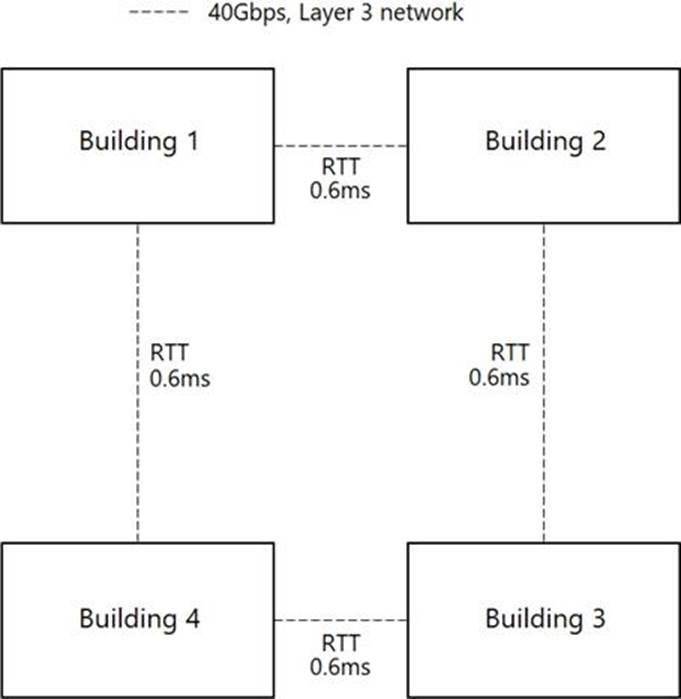VMware 5V0-21.20 VMware Certified Master Specialist (HCI 2020) Online Training
VMware 5V0-21.20 Online Training
The questions for 5V0-21.20 were last updated at Apr 03,2025.
- Exam Code: 5V0-21.20
- Exam Name: VMware Certified Master Specialist (HCI 2020)
- Certification Provider: VMware
- Latest update: Apr 03,2025
A vSAN administrator is changing the number of stripes in the vSAN policy from 1 to 2 on a 3-node vSAN Cluster .
What is a possible impact of this policy change?
- A . Stripes will be placed on separate media, but does not guarantee separate hosts or disk groups.
- B . Policy cannot be applied as the cluster does not meet the minimum number of fault domains.
- C . The amount of raw capacity required to comply with this policy will double.
- D . The amount of raw capacity required to comply with this policy will decrease by half.
When designing a vSAN Cluster, which three should be considered when sizing a vSAN datastore? (Choose three.)
- A . Storage Policy or Policies to be used
- B . capacity device queue depth
- C . vSAN Slack Space
- D . cache disks with 10% of the Disk Group
- E . On-Disk Format overheard
- F . endurance level of capacity disk used
Which step can be avoided when replacing a capacity tier device on a controller with passthrough mode and support for hot-plug?
- A . Shut down the host.
- B . Add the new disk to the disk group.
- C . Replace the physical drive.
- D . Remove the disk from the disk group.
Refer to the exhibit:

There are three hosts in a vSAN cluster. All virtual machines in the cluster are assigned a
storage policy with failures to tolerate set to 1 failure – RAID-1 (Mirroring) .
What is the result of placing a host in maintenance mode using the options shown in the image?
- A . The host will not enter maintenance mode. A general vSAN error is reported.
- B . The host will enter maintenance mode. A reduced redundancy warning is displayed.
- C . The host will enter maintenance mode. All powered-off and suspended VMs are migrated to other hosts.
- D . The host will not enter maintenance mode. The administrator is prompted to select a different data migration option.
An administrator arrives at work and begins their morning checks on a four node, all-flash vSAN Cluster. They notice the vSAN datastore reached 99% capacity due to a single node failure.
How can the administrator provide temporary relief?
- A . change FTT=1 with RAID-1 (Mirroring) to FTT=0 No data redundancy
- B . change FTT=1 with RAID-1 (Mirroring) to FTT=1 with RAID-5 (Erasure coding)
- C . change FTT=1 with RAID-5 (Erasure coding) to FTT=0 No data redundancy
- D . change FTT=1 with RAID-5 (Erasure coding) to FTT=1 with RAID-1 (Mirroring)
Reference the exhibit.

A university campus has a site topology illustrated in the exhibit. Adjacent connected buildings are connected with a single 40gb layer 3 network with a RTT of 0.6ms as depicted by each line. An architect wants to configure a fault domain in each building.
What would the architect need change in order to implement a fully supported vSAN Cluster?
- A . Enable a single Layer 2 network across all buildings for vSAN connectivity.
- B . Decrease the existing RTT between the existing links by 0.1ms or more.
- C . Add an additional link to the existing adjacent links to make it redundant.
- D . Enable IPv6 networks across all buildings for vSAN connectivity.
A customer has lost connectivity to one of their sites In a vSAN Stretched Cluster.
When connectivity is restored, what DRS setting will ensure VMs are not migrated back before resyncs are complete?
- A . DRS configured in Manual Mode
- B . DRS turned off
- C . DRS configured in Fully Automated mode
- D . DRS configured in Partially Automated mode
A failed storage controller has two vSAN disk groups attached. The components contained on the dnves in those disk groups are marked Degraded. vSAN reports that some objects do not comply with their assigned storage policy.
How is the compliance issue resolved?
- A . Initiate a proactive rebalance to force component repairs.
- B . Storage policies must be reapplied to all affected objects.
- C . Rebuilding of the degraded components starts immediately.
- D . Degraded components are repaired after CLOM Repair Delay Timer expires.
An administrator receives an alert for vCenter being unavailable. With vCenter running on vSAN, the administrator wants to know if any other VMs are impacted .
What command can an administrator run to determine the overall health of the vSAN objects?
- A . esxcli vsan errands timemachine get
- B . esxcli vsan storage list
- C . esxcli vsan cluster get
- D . esxcli vsan health cluster list
During planned maintenance of a four-node vSAN cluster, an outsourced IT contractor accidentally removed a 2.5" SSD cache disk from one of the vSAN nodes. The storage policy has been configured with FTT=1 RAID 1, and the disk management UI marked the disk group as absent.
Which remediation steps should the administrator select to ensure VMs become compliant with the storage policy as soon as possible?
- A . replace the SSD cache disk > rescan > add disk back in disk group
- B . enter host in maintenance > remove from disk group > shutdown host > replace disk > power on host
- C . remove disk group > enter host in maintenance > fully evacuate all data > exit maintenance
- D . vSAN Health Check > retest > object health > repair objects immediately
Latest 5V0-21.20 Dumps Valid Version with 77 Q&As
Latest And Valid Q&A | Instant Download | Once Fail, Full Refund

